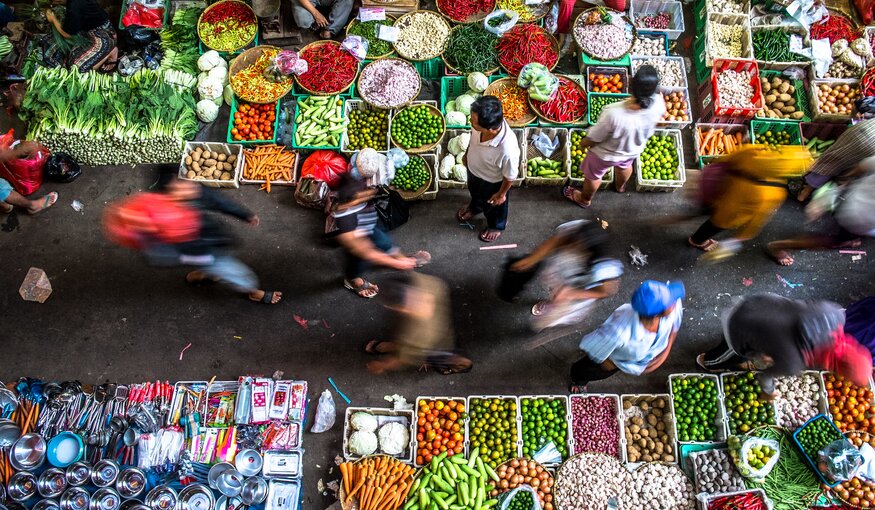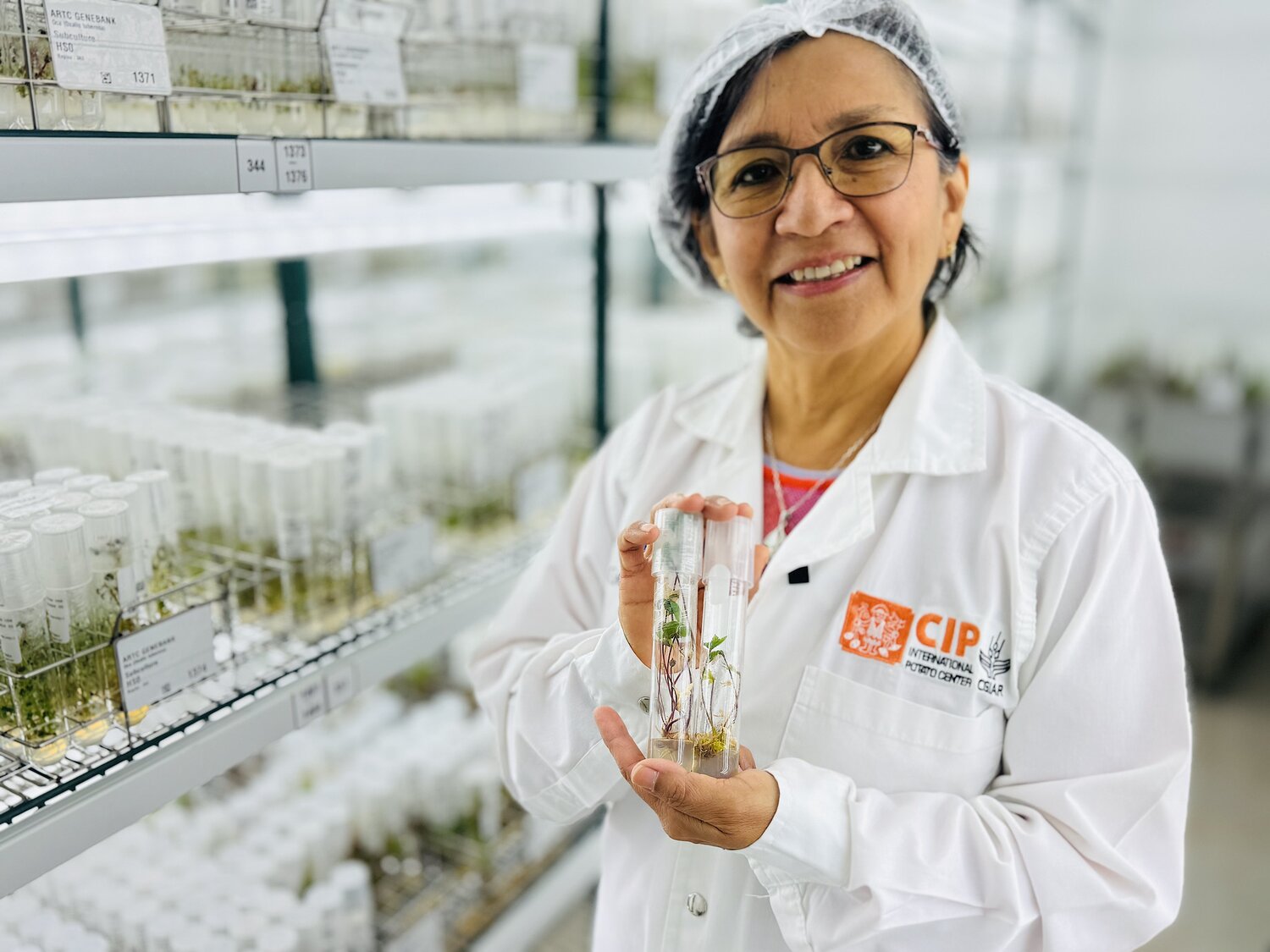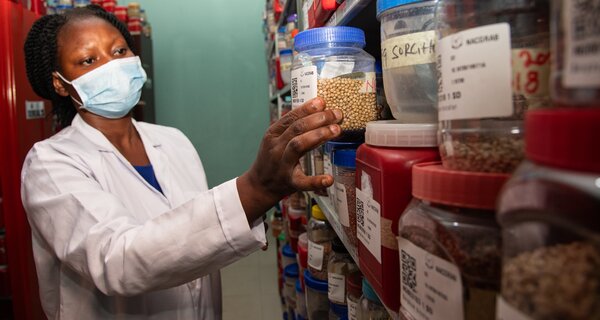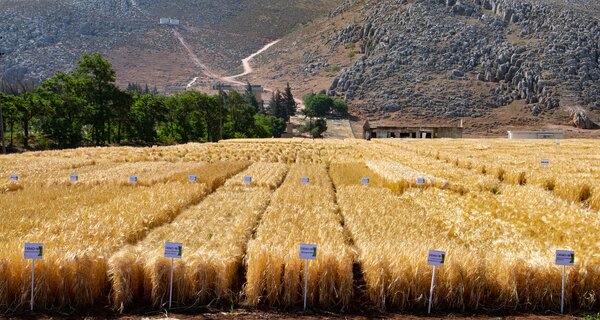Call to Action: Crop Diversity Drives Global Security

Busy market in Indonesia. Photo: Henry Sudarman
8 July 2025
Conservation of agrobiodiversity bolsters nations’ well-being and resilience to crises.
Our view of national and global security should expand. Certainly, it means protecting against the threat of war, terrorism and espionage from specific actors. However, the concept of safeguarding national and global stability and well-being should also include environmental, social and economic considerations.
As World Food Prize laureate M.S. Swaminathan stated, “the future belongs to nations with grains and not guns.”
Food security is a key element of security and stability. Yet, the agricultural systems that anchor our food security already struggle to meet the demands of the global population, which is predicted to reach 10 billion by the end of the century.
The Center for Strategic and International Studies (CSIS) explores what needs to be done about this in a ground-breaking report titled The Nature of Strength: Creating a More Secure Future with Agricultural Biodiversity, prepared with the support of the Crop Trust.
The report underlines that the key to food security is tapping the diversity of crops held in genebanks.
Outbreaks of diseases and pests wipe out 17 percent of annual global yields of potatoes and 30 percent of rice, amounting to almost USD 300 billion in lost production. Environmental disasters cost more than USD 100 billion in agricultural losses across Africa, Latin America and Asia from 2008 to 2018. These and other threats faced by agriculture around the world can be overcome by using the diversity of the crops themselves.
Genebanks to the Rescue
Agricultural biodiversity – and in particular crop diversity – is the foundation of the world’s food supply. It allows plant breeders to develop new crop varieties resilient to pests, diseases, droughts and floods. Diverse crops and farms improve the resilience, diets, food security and economic prospects of farmers, consumers, regions and countries around the world.

The genebank at the International Potato Center (CIP) in Lima, Peru maintains clonal and seed collections of potato, sweetpotato, and Andean roots and tubers. Photo: Shawn Landersz/CGIAR
However, agrobiodiversity is eroding in the face of socio-economic, climatic and environmental pressures. This deprives agriculture of options to build resilience to threats and avoid future losses.
Genebanks offer an effective solution. There are around 850 genebanks around the world that collectively preserve a treasure trove of over 5.9 million seed and plant samples. Genebank staff collect, conserve, and manage crop diversity before it disappears. Then they make it available to researchers, crop breeders and farmers to solve problems and provide new options.
“It is in the interest of every country to conserve and use its own genetic resources,” Crop Trust Executive Director Stefan Schmitz said in June 2025 in closing remarks after a CSIS panel discussion on agrobiodiversity and national security, where the report was launched. “This is important. But it’s not enough. Every country should make sure that crop diversity around the world is conserved and available to researchers and farmers. Collaboration to protect crop diversity as a global public good is essential.”
Three Recommendations
The CSIS report offers several recommendations to address the threats posed by the loss of crop diversity.
First, we must strategically protect and fund genebanks, which are vulnerable to natural disasters, financial difficulties and even armed conflict. Without reliable and predictable support for genebanks, our ability to overcome biological and environmental threats to agriculture will be diminished, according to the report.
Second, there is a need to incorporate agricultural biodiversity into national security risk assessments and post-conflict stabilization strategies. The state of agricultural biodiversity should be considered in pre-conflict assessments by defense actors, as well as post-conflict interventions by the defense and development communities, according to the authors.
Third, we must promote diverse crops and diets for food and nutrition security. Today, 2.8 billion people cannot afford the least expensive healthy diet. Using crop diversity to develop biofortified crops with increased nutritional content is an important strategy for boosting access to nutrient-rich food globally, but diversifying diets as a whole should be the overall aim.
Awareness and Action Needed
The Crop Trust has recently partnered with the CSIS to elevate the global conversation on agrobiodiversity as a pillar of national and international security. Two high-level roundtables in Washington, D.C. brought together security experts to explore how safeguarding crop diversity can strengthen both domestic stability and international cooperation. Key insights from these dialogues were shared at the Munich Security Conference in February 2025, where Stefan Schmitz and CIMMYT Director General Bram Govaerts released a Munich Statement on Agrobiodiversity and Security.

Stefan Schmitz speaks at the Seeding Security: The Urgency of Resilient Agriculture in a Destabilized World event.
The CSIS report articulates a recurring theme – navigating emerging risks while ensuring the world’s food supply requires reevaluating agrobiodiversity for its strategic importance for the food and economic security of all nations.
It also issues a compelling call to action: “We must protect agrobiodiversity to support existing agricultural production and critical breeding efforts for the uncertain future we know will come.” Making agrobiodiversity a security priority lays the foundation for a more stable and resilient world.
Explore the CSIS report: The Nature of Strength: Creating a More Secure Future with Agricultural Biodiversity
Categories: For The Press, For Partners, For Policymakers, Food Security, Nutritional Security



